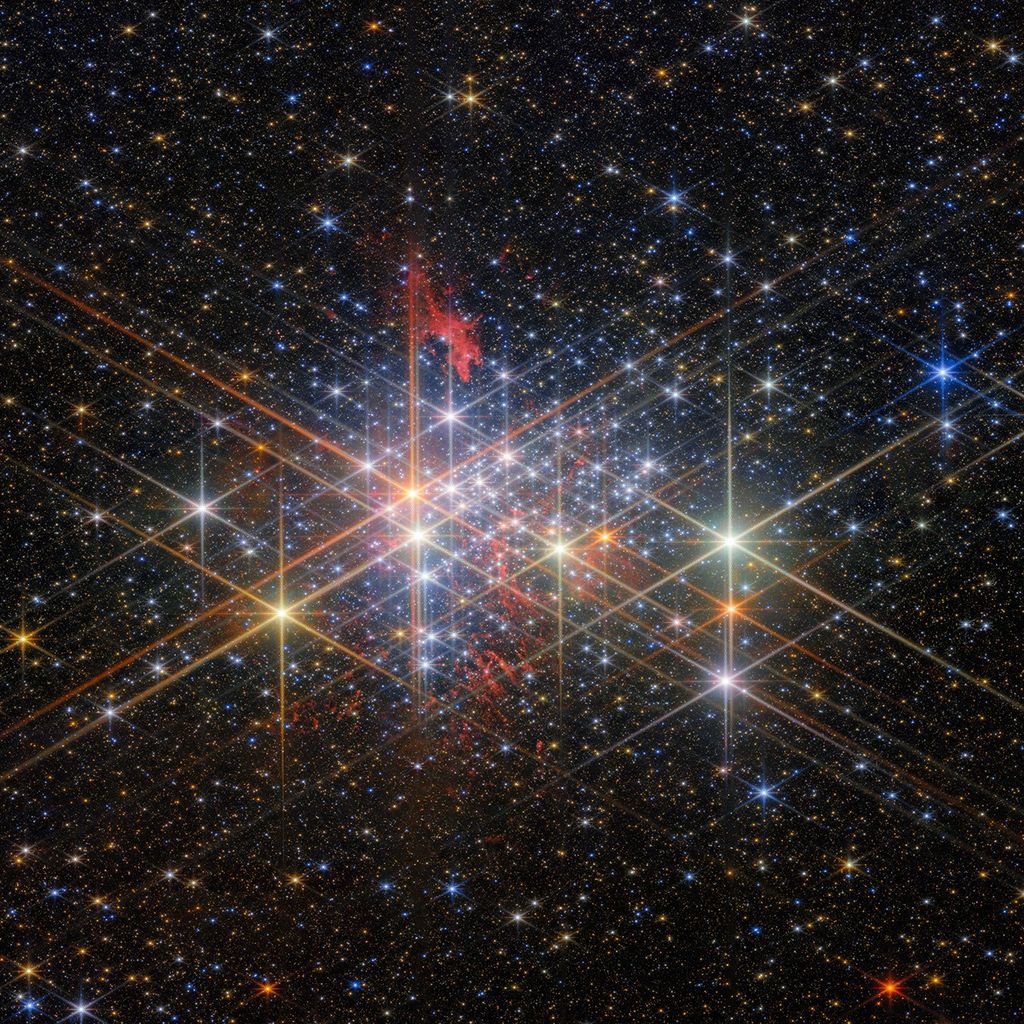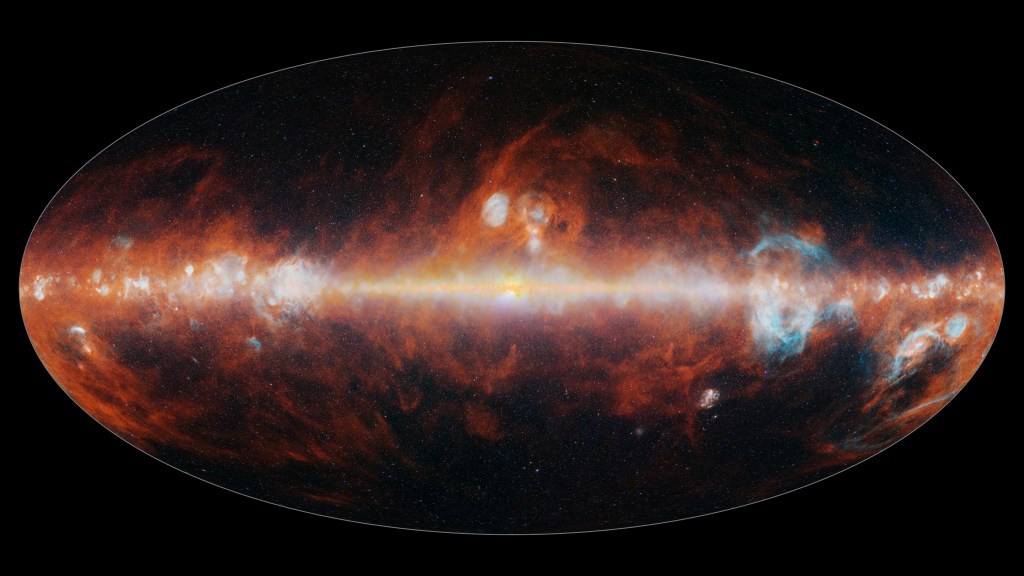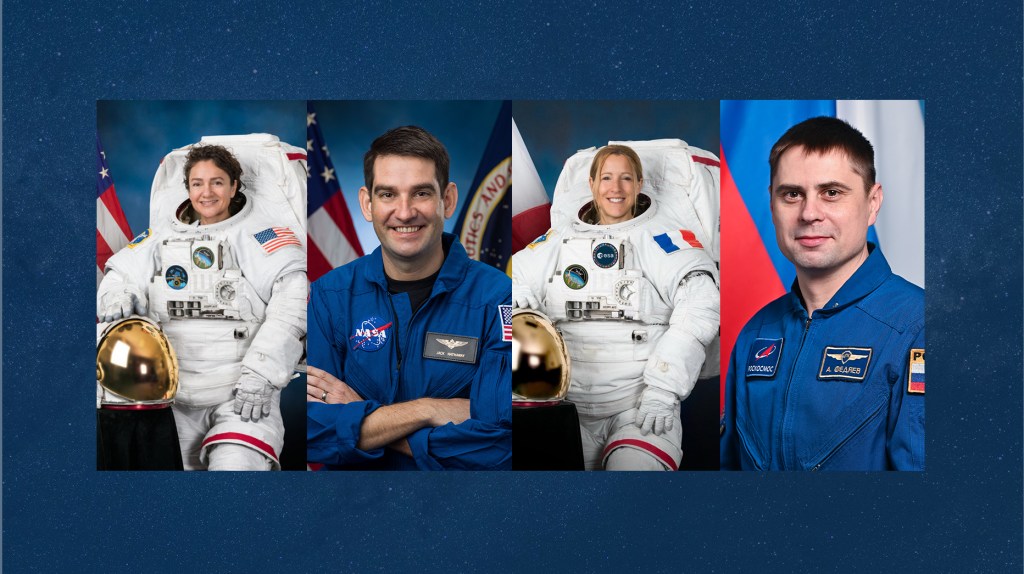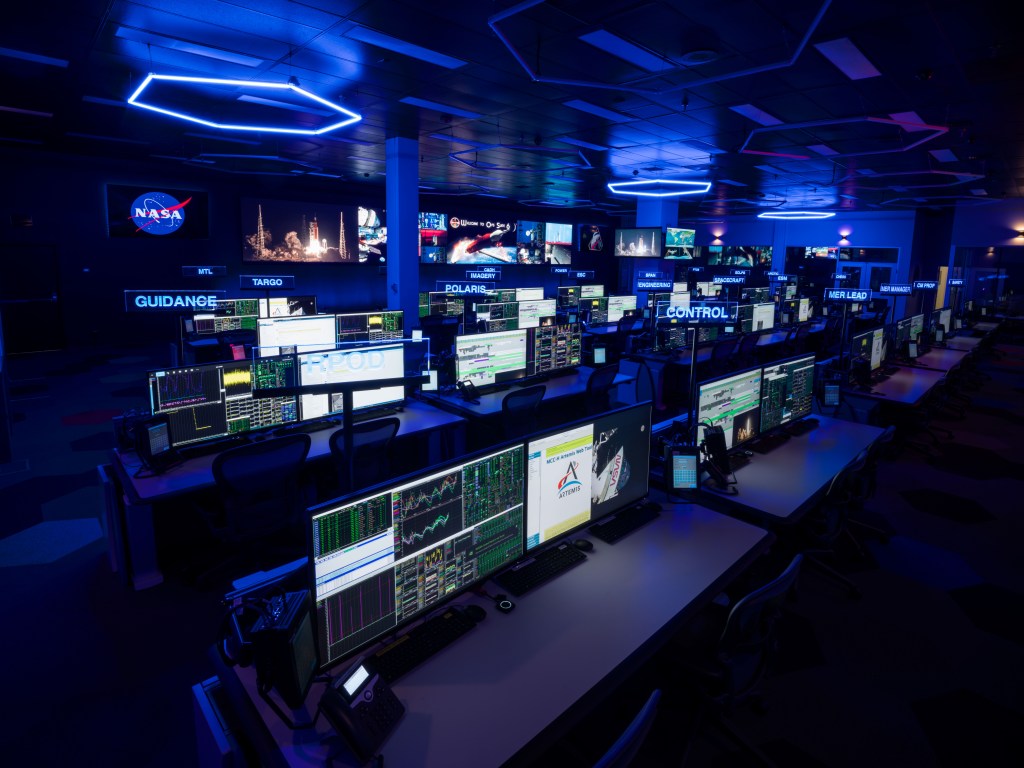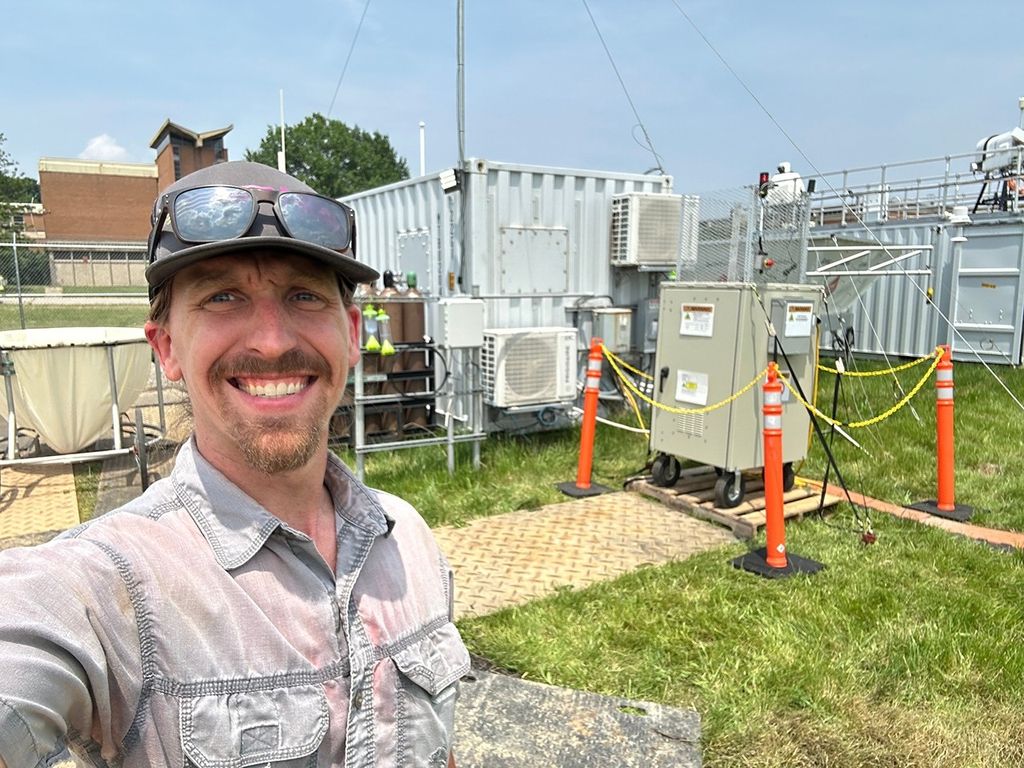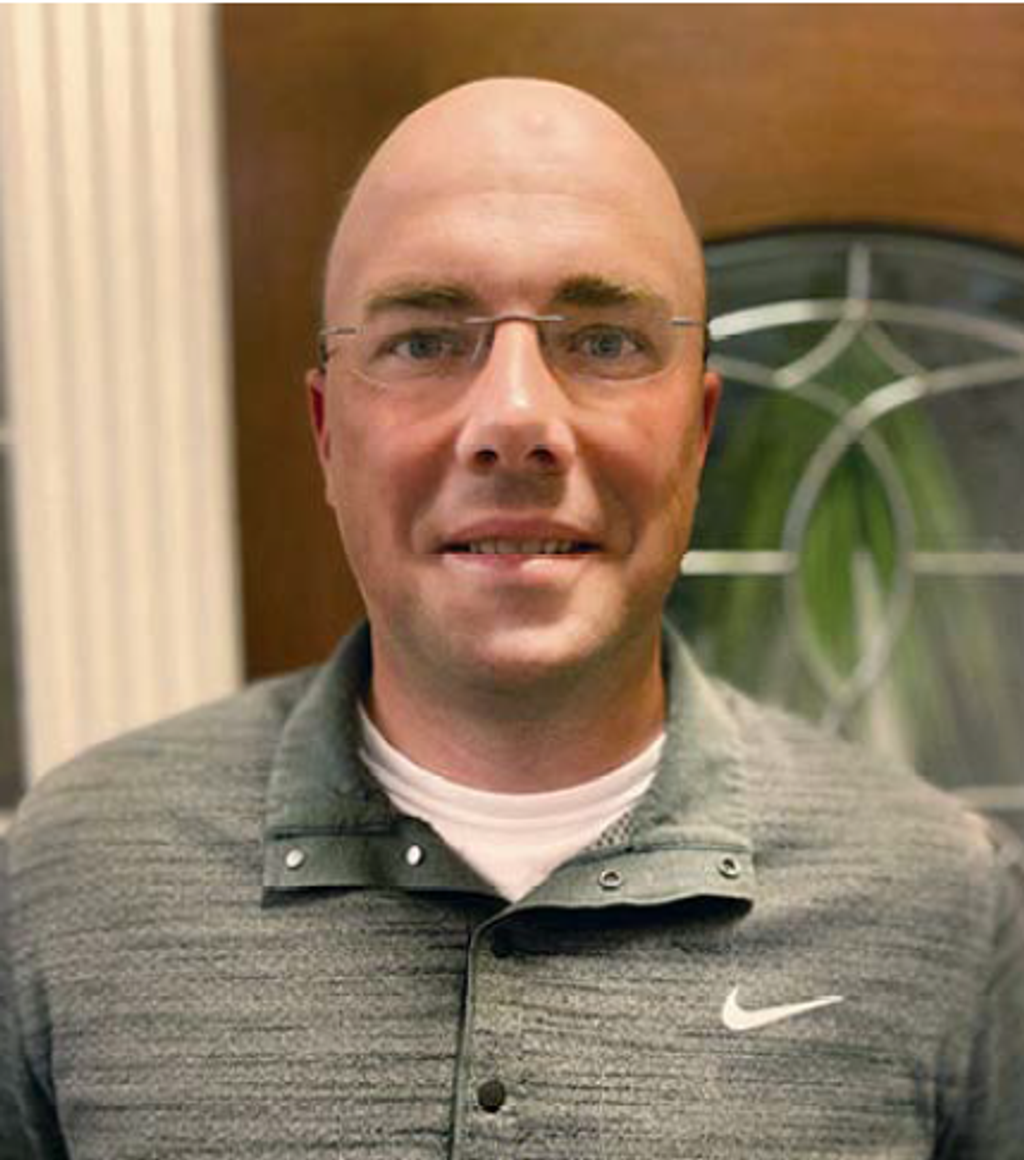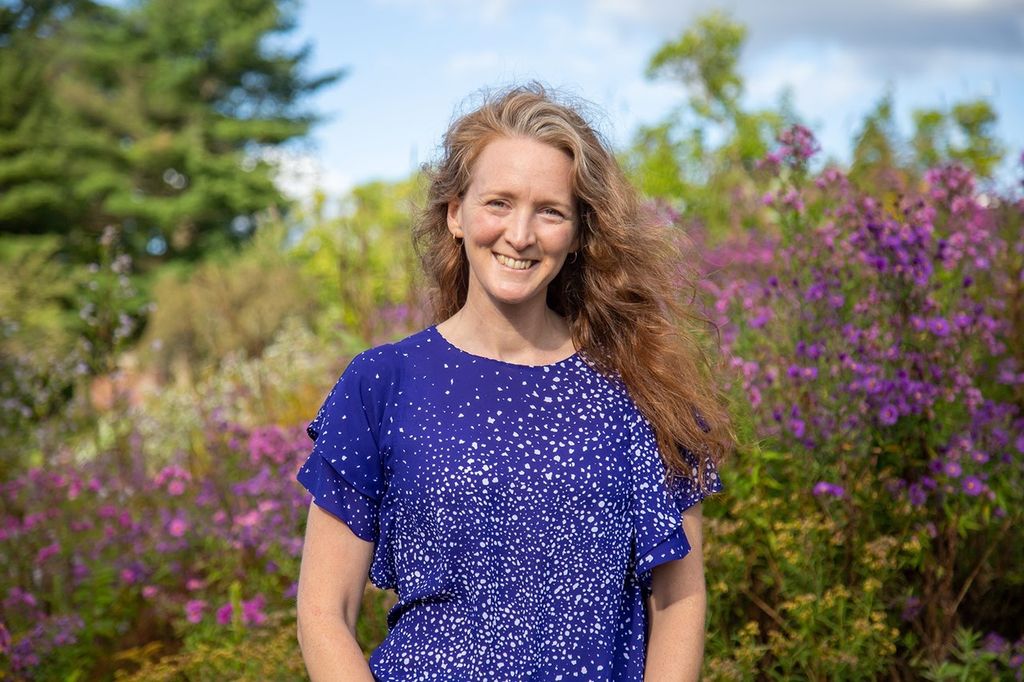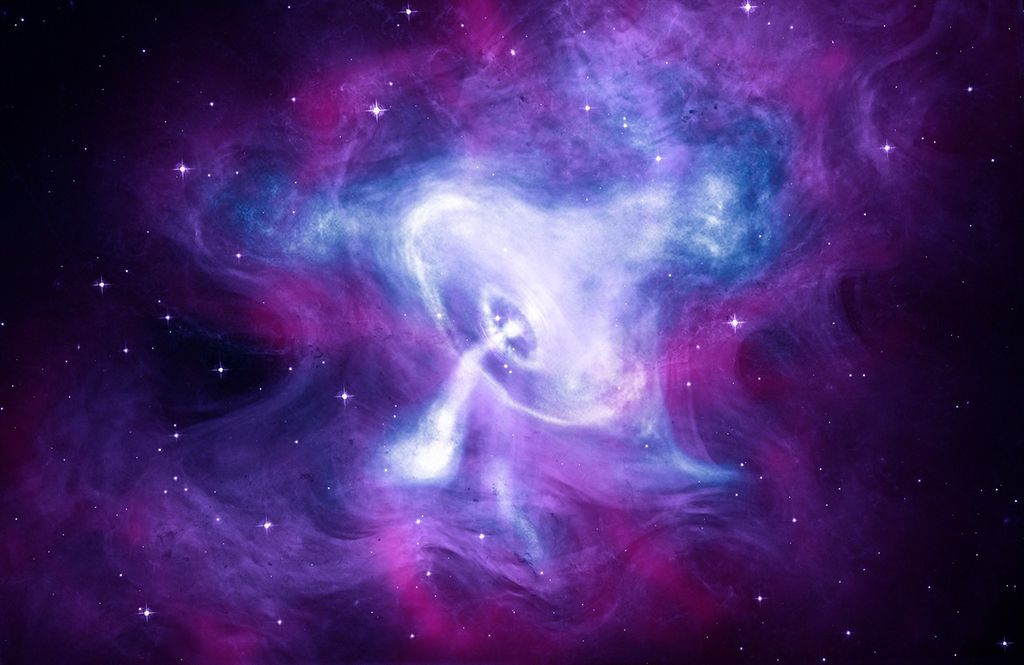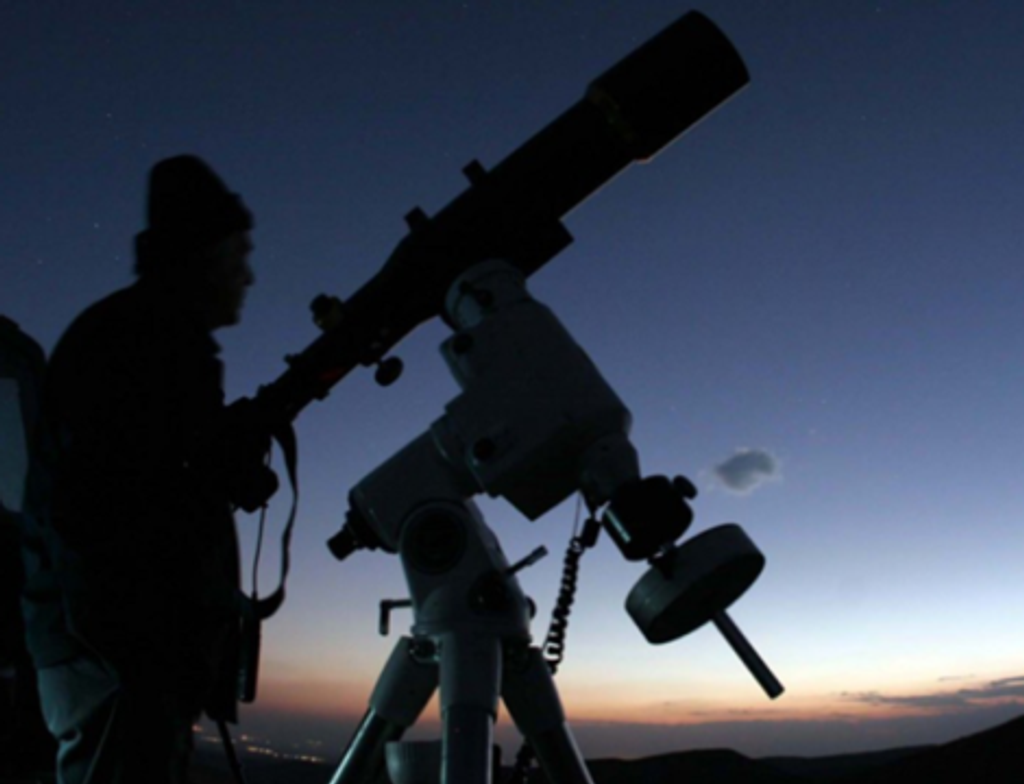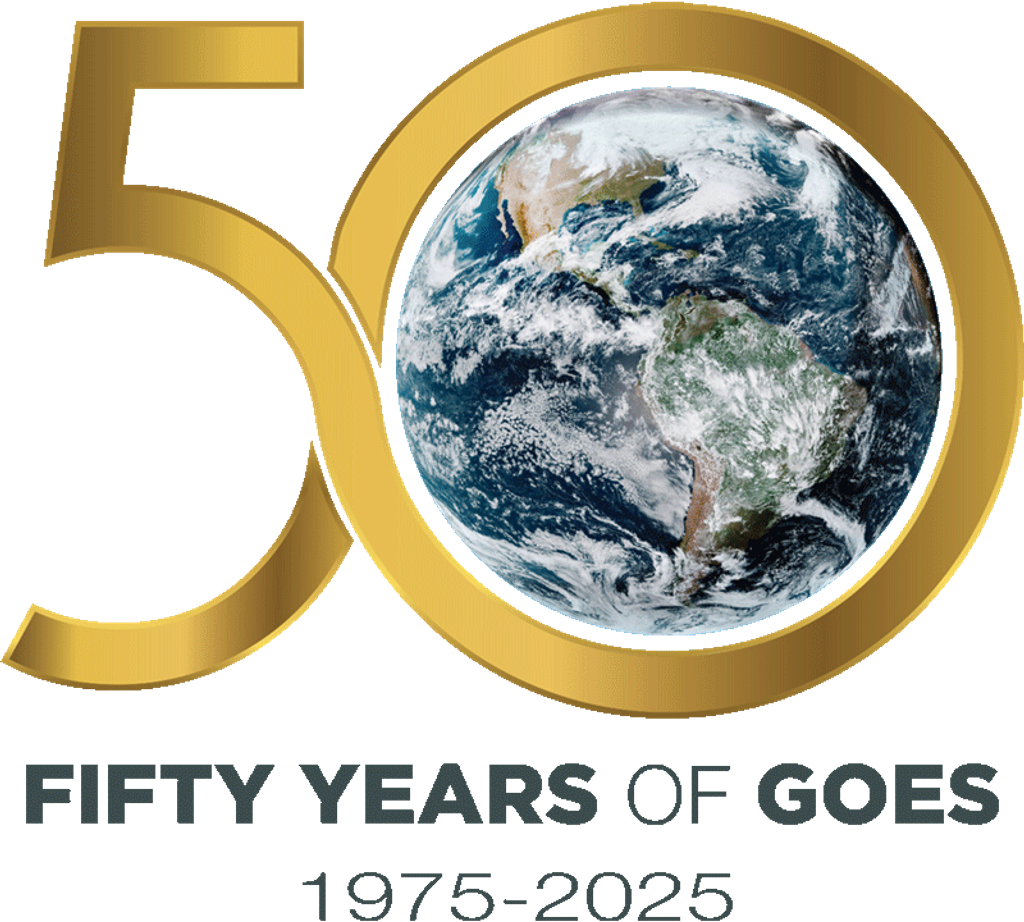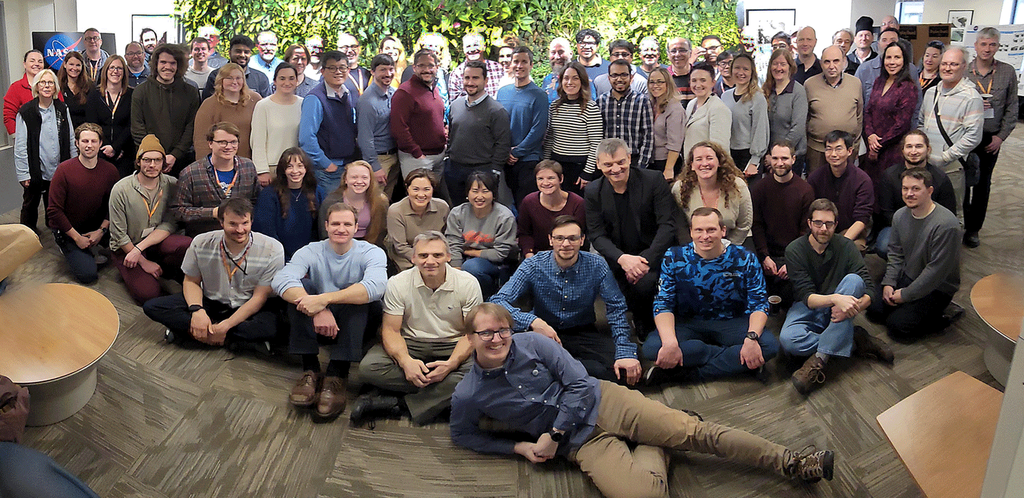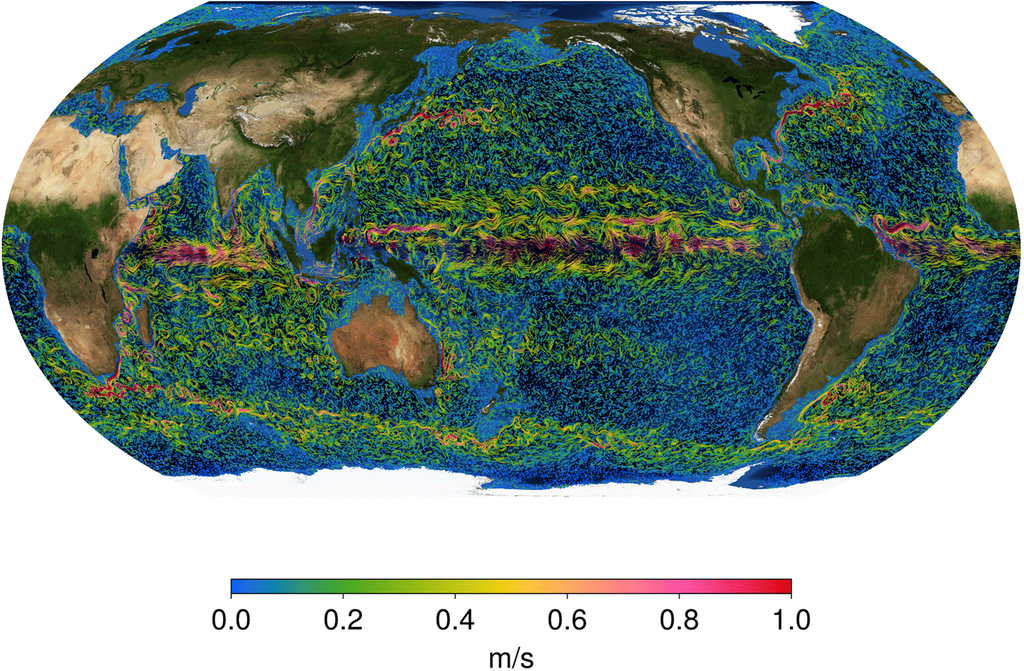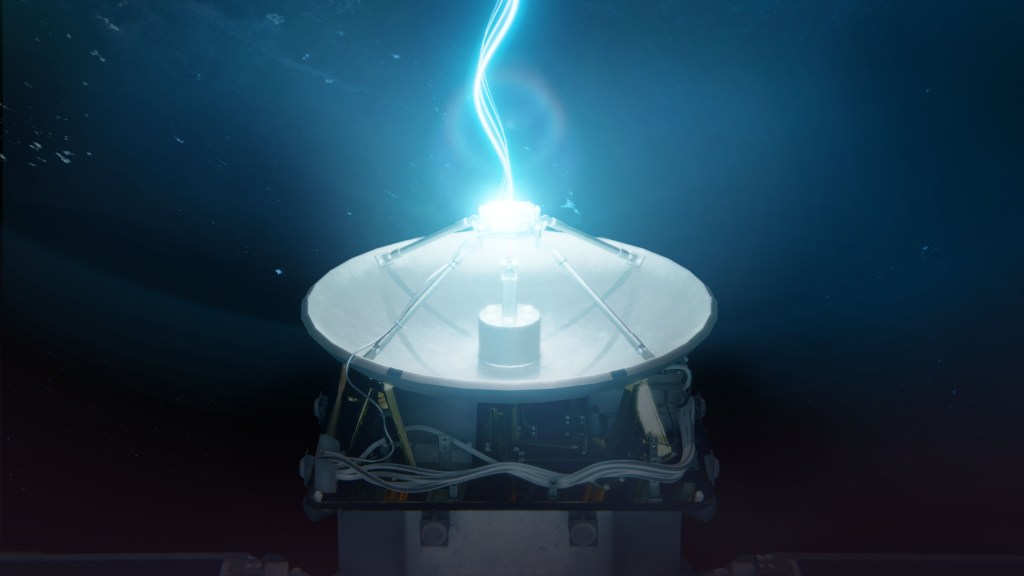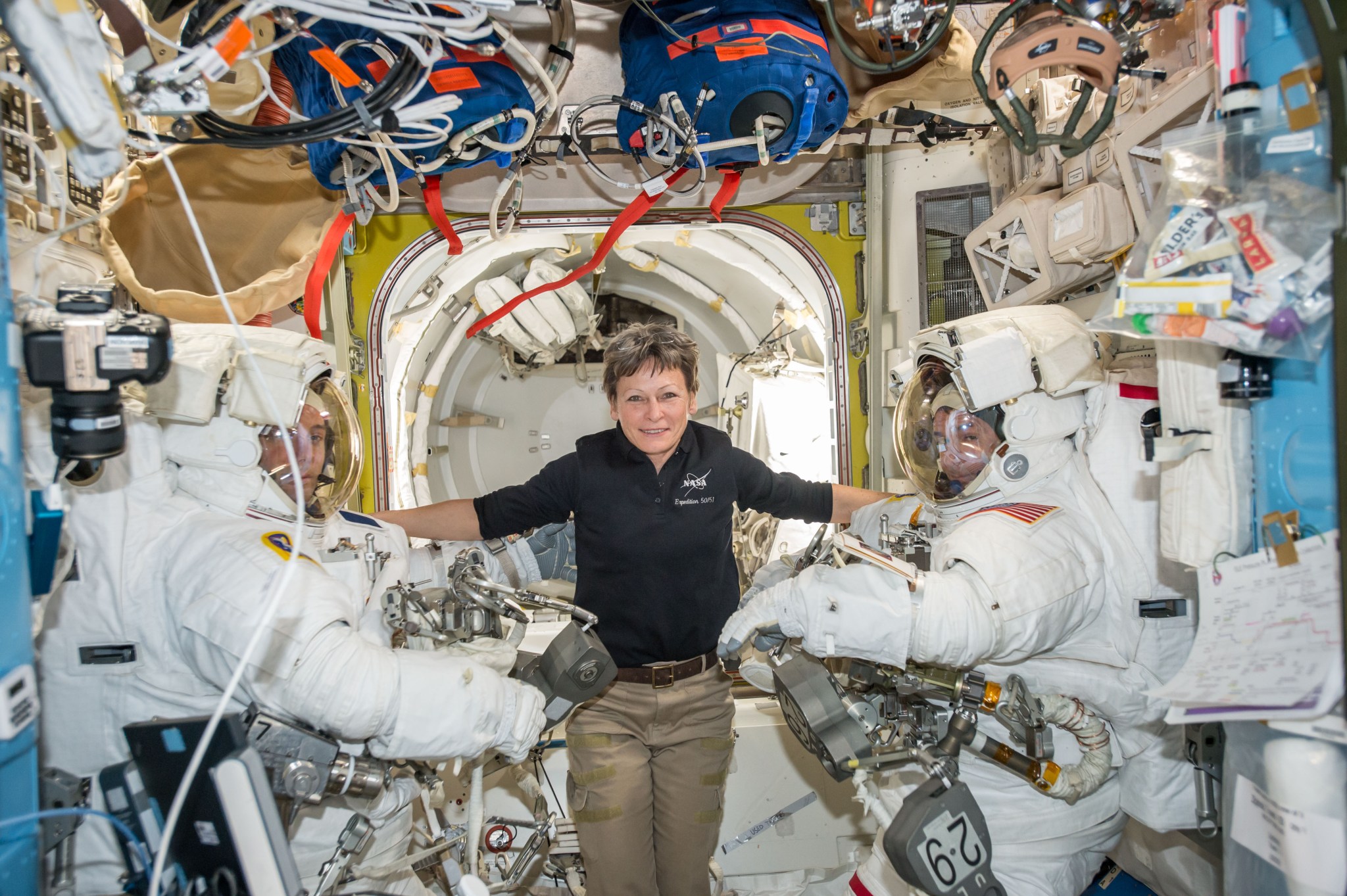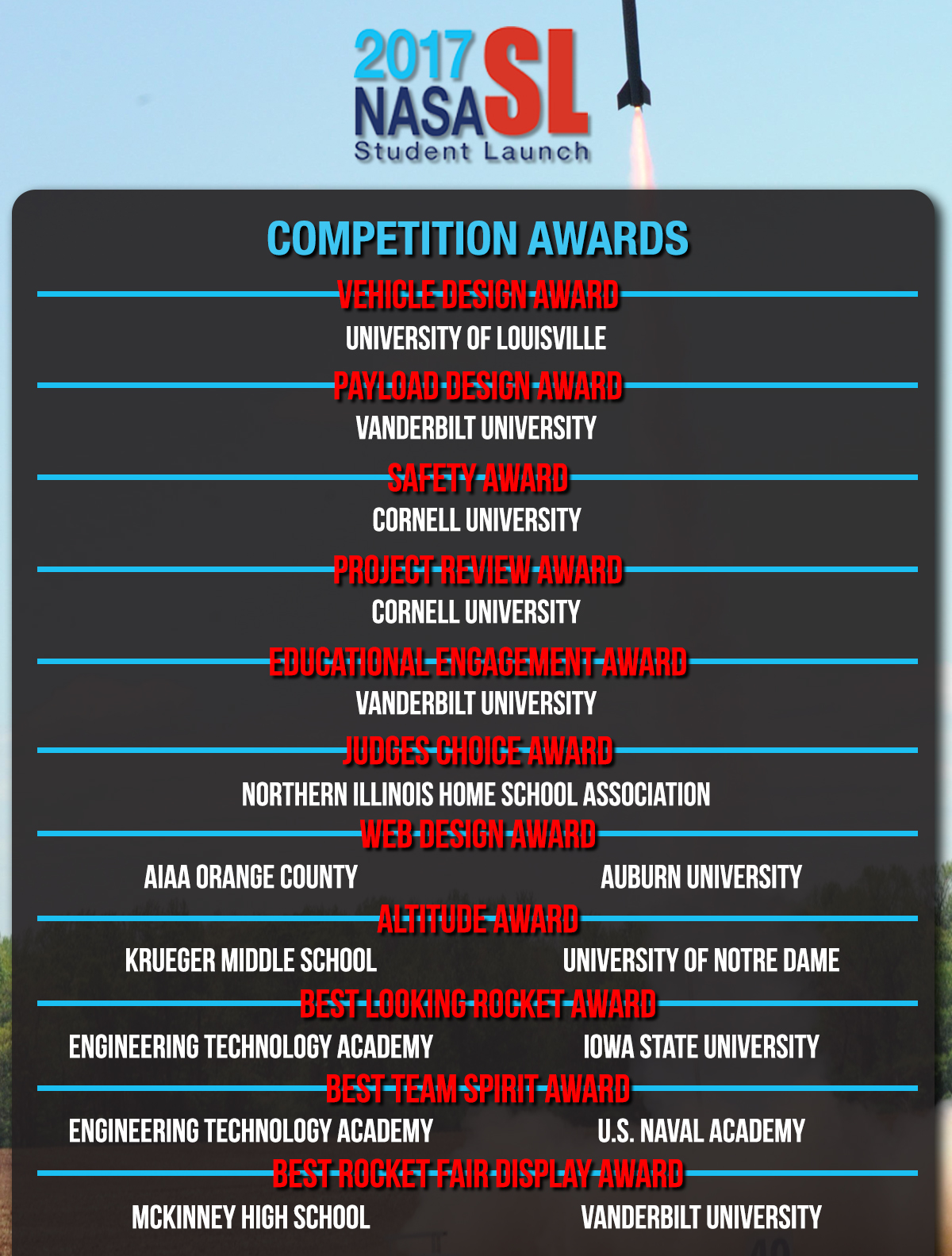In This Week’s Star
- One NASA Astronaut Comes Home, Another Extends Stay on Space Station
- NASA Astronaut Kate Rubins Shares Space Station Experiences with Marshall Workforce
- Marshall Honored for Role in NASA’s Fifth Straight ‘Best Place to Work’ Award
- Benchmarking Studies ‘Integral to Everything We do at Marshall’
- NASA Announces Preliminary Award Winners for 2017 Student Launch
- Medical Society Learns About Space Station Discoveries on Visit to Marshall
- Rover Challenge Winners Featured on ‘This Week @NASA’
- This Week in NASA History: First Space Shuttle Mission, STS-1, Launches — April 12, 1981
- Obituaries
One NASA Astronaut Comes Home, Another Extends Stay on Space Station
While NASA astronaut Shane Kimbrough returned safely to Earth from the International Space Station, fellow crew member Peggy Whitson added three months to her record-breaking stay on the orbiting laboratory.
Kimbrough and Russian cosmonauts Sergey Ryzhikov and Andrey Borisenko returned to Earth April 10, landing in a Soyuz capsule in Kazakhstan after spending 173 days in space. As part of Expedition 50, the crew members contributed to hundreds of experiments in biology, biotechnology, physical science and Earth observation.
While in orbit, Kimbrough also conducted four spacewalks, adding new batteries to store electrical energy generated by the station’s solar arrays and preparing a Pressurized Mating Adapter which will allow for future docking with commercial crew capsules.
The day before his return, Kimbrough turned over command of the space station to Whitson, who announced April 5 the extension of her stay in orbit by another three months. Whitson’s extension will ensure a full complement of six crew members on board the station and increase the amount of valuable astronaut time available for experiments on board the station.
NASA and the Russian space agency Roscosmos reached an agreement to extend Whitson’s stay into Expedition 52. Rather than returning to Earth with her Expedition 51 crew mates in June as originally planned, she will return home with NASA’s Jack Fischer and Roscosmos’ Fyodor Yurchikhin. Ficher and Yurchikin are scheduled to arrive at the space station April 20, with a return to Earth scheduled for September.
Whitson launched on Nov. 17, 2016, with 377 days in space already under her belt, and is poised to break Jeff Williams’ U.S. record of 534 cumulative days in space on April 24.
This is Whitson’s third long-duration stay onboard the orbiting laboratory. In 2008, Whitson became the first woman to command the space station, and is now the first woman to command it twice. In addition, she holds the record for most spacewalks by a female.
To keep up with Whitson’s stay in orbit, follow her on Twitter.
NASA Astronaut Kate Rubins Shares Space Station Experiences with Marshall Workforce
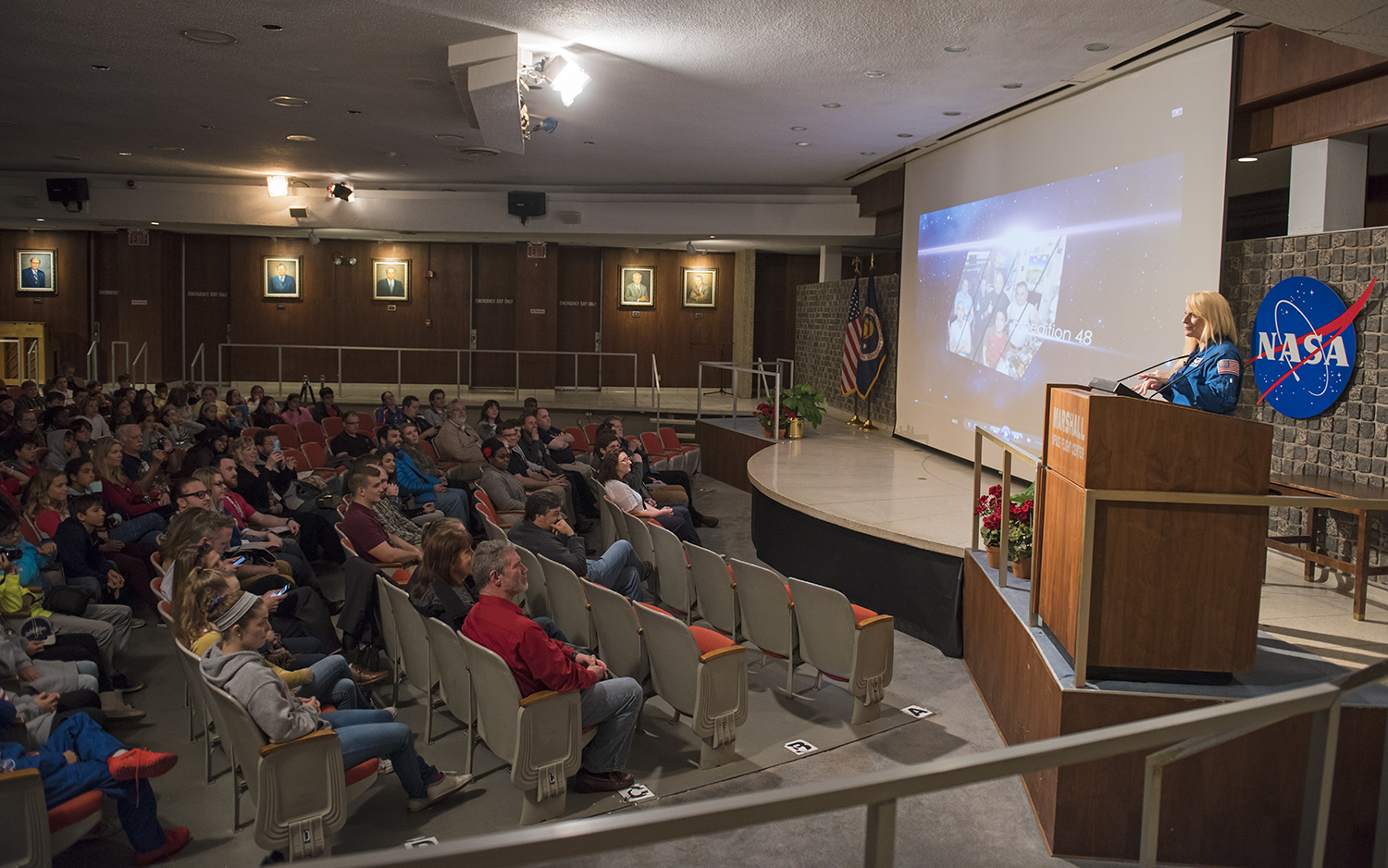
NASA astronaut Kate Rubins presents highlights from Expedition 48/49, her mission to the International Space Station, to team members and Space Camp students from the U.S. Space & Rocket Center in Huntsville, April 6 at NASA’s Marshall Space Flight Center. During her mission, Rubins became the first person to sequence DNA in space, researching technology development for deep-space exploration by humans, Earth and space science. She also conducted two spacewalks, in which she and NASA astronaut Jeff Williams installed an International Docking Adapter and performed maintenance of the station’s external thermal control system and installed high-definition cameras. (NASA/MSFC/Charles Beason)
Marshall Honored for Role in NASA’s Fifth Straight ‘Best Place to Work’ Award
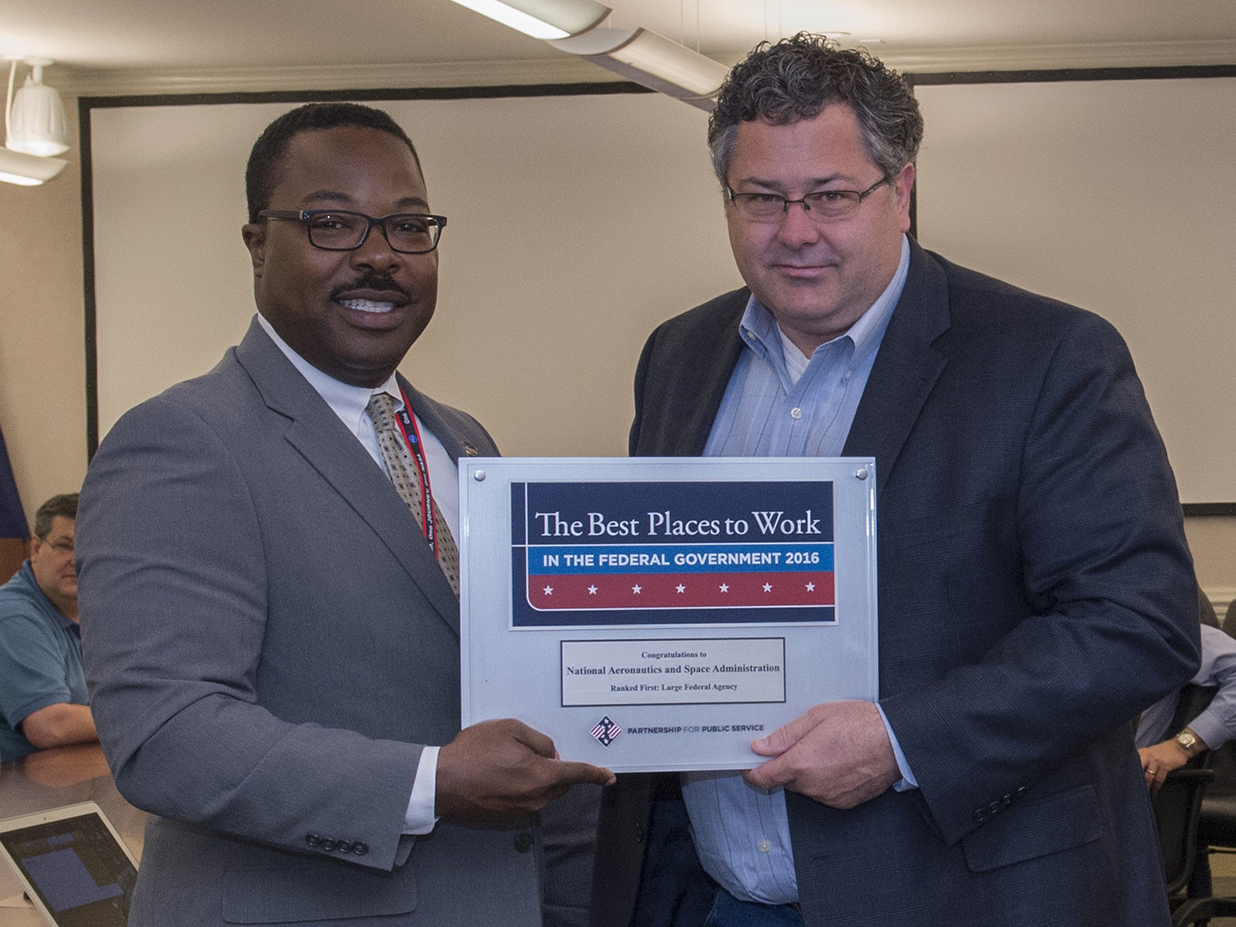
Todd May, right, director of NASA’s Marshall Space Flight Center, is presented a commemorative plaque by Marcus Lea, director of Marshall’s Office of Human Capital, signifying 2016 as the fifth straight year NASA was named “The Best Place to Work in the Federal Government” by the nonprofit Partnership for Public Service as the result of the annual Federal Employee Viewpoint Survey conducted by the Office of Personnel Management. May accepted the plaque for the center during the April 10 management team meeting. The annual survey, a continuation of the ongoing conversation between NASA leadership and civil service employees, is a powerful tool by which team members can influence change across the agency by providing feedback on issues that matter most in regard to job satisfaction and mission engagement. The next viewpoint survey is slated to be distributed to civil service employees in May. Team members are encouraged to share their opinions about what works and what needs improvement in their organizations, Marshall and the agency. Headquartered in Washington, the Partnership for Public Service is a nonpartisan organization which promotes the most efficient and effective government practices and operations serving the American people. (NASA/MSFC/Emmett Given)
Benchmarking Studies ‘Integral to Everything We do at Marshall’
By Megan Davidson
From food to flu shots to construction, benchmarking touches just about every part of planning and day-to-day life at NASA’s Marshall Space Flight Center.
The widely used process compares current business standards to best practices from other industries. “Benchmarking is an integral part of everything we do at Marshall,” said Roy Malone, director of the Office of Center Operations. “It helps us save money that can be invested in other center programs and make improvements that significantly benefit our employees.”
Bob Devlin, deputy director of the Office of Center Operations, says benchmarking across the federal government became a focused effort around 1994. In 2010, Marshall began a program to team with other NASA centers to do comparison studies and workshops to determine best practices for operations.
“We looked at everything in those first assessments – from major expenditures down to how often each center cut the grass,” Devlin recalled. “There’s a lot of data out there to use. We took the standards that we had from various federal sources and compared them across the agency to come up with benchmarks that we use as a baseline for services.”
Since those first assessments, center operations management from across NASA continues to meet every six months to compare best practices, and talk about specific ideas and issues.
Benchmarking has led to several improvements and cost savings at Marshall. “The center used to provide in-house flu shots as part of the medical services contract,” Devlin said. “But at one of our meetings with NASA center operations, Kennedy Space Center gave us an idea for a different concept that was successful for them.” That idea was for Marshall to bring representatives from retail pharmacies to the center to administer flu shots, available to most team members through their insurance. “Not only did we save money to allocate to other areas, but it also improved the level of service to our employees by bringing in those outside companies to different buildings around the center,” Devlin said.
Benchmarking studies also have led to new choices for meals. The Marshall Exchange, which provides a variety of services to the center, worked with food truck vendors to cater to employees who work in buildings along Martin Road. The effort saved a avoided investing resources in building new cafeterias in that area. Through a study Marshall did with the U.S. Army Corps of Engineers, a small retail site also is in the works to provide more on-site services to team members. Devlin said a future plan being discussed is to move cafeterias under the management of the Marshall Exchange so they can leverage more food vendors, which may cut down on in-house costs.
Through an idea from NASA’s Langley Research Center, Marshall is considering the use of drones to check infrastructure issues. “When you have around 250 buildings to survey, there’s a lot you can’t see from the ground — you need to see it from the air,” Devlin said. “That can get really expensive. Drones may be a good cost-saving solution, and we’re working with several NASA centers and the U.S. Army Garrison to see if that should be carried out at Marshall.”
Marshall also is trimming infrastructure costs through better efficiency standards for buildings, which was based in part with working with companies like Intergraph of Madison, Alabama, to see what kind of innovative and “green” ideas were being used to build its offices. “Through leveraging benchmarking standards on buildings, we’ve saved 35 percent on utilities, and 65 percent on operations maintenance,” Devlin said. “That, along with other energy innovations, saves the center about $10 million a year on utility costs alone.”
“Benchmarking is critical to future master planning,” Malone said. “We’re looking at doing a lot more to provide services in the most efficient and affordable ways — enabling the Marshall team to do their jobs even better and improve quality of life.”
Davidson, an ASRC Federal/Analytical Services employee, supports the Office of Strategic Analysis & Communications.
NASA Announces Preliminary Award Winners for 2017 Student Launch
By Brian C. Massey
After a day of rocket launches during the 2017 Student Launch, NASA announced the challenge’s preliminary winners April 8 at an awards ceremony hosted by Orbital ATK’s Propulsion Systems Division of Promontory, Utah, at the U.S. Space & Rocket Center in Huntsville.
Fifty middle and high school, college and university teams from 23 states launched their student-built rockets at Bragg Farms in Toney, Alabama, near NASA’s Marshall Space Flight Center.
Participating in the Student Launch challenge, student teams demonstrated advanced aerospace and engineering skills as they launched their rockets to an altitude of 1 mile, deployed an automated parachute system and landed the rocket safely for reuse.
The event was the culmination of eight months of work for students, during which the teams built and tested their rockets and completed a series of technical reviews mirroring criteria in NASA’s engineering design lifecycle and safety protocol.
Now in its 17th year, Student Launch included a visit from NASA astronaut Kate Rubins, a member of the International Space Station’s Expedition 48/49 crew; a behind-the-scenes tour of Marshall facilities; and a rocket fair, where students showcased their rocket designs to NASA team members, corporate sponsor Orbital ATK and the public.
Marshall’s Academic Affairs Office manages Student Launch, to further NASA’s major education goal of attracting and encouraging students to pursue degrees and careers in the STEM fields of science, technology, engineering and mathematics. NASA’s Office of Education and Human Exploration and Operations Mission Directorate, as well as Orbital ATK’s Propulsion Systems Division and the Huntsville chapter of the National Space Club, provide funding and leadership for the initiative.
For a complete list of winners, click here.
The overall winners of Student Launch will be announced in early May, as the final calculations are still under review for accuracy. This will include the first- through third-place teams, as well as the rookie award winner, with the first-place winner receiving a $5,000 prize from sponsor Orbital ATK and the second-place winner receiving a $2,500 prize from the National Space Club.
Archived launch-day footage is available on Marshall’s Ustream account.
Massey, an ASRC Federal/Analytical Services employee and the Marshall Star editor, supports the Office of Strategic Analysis & Communications.
Medical Society Learns About Space Station Discoveries on Visit to Marshall
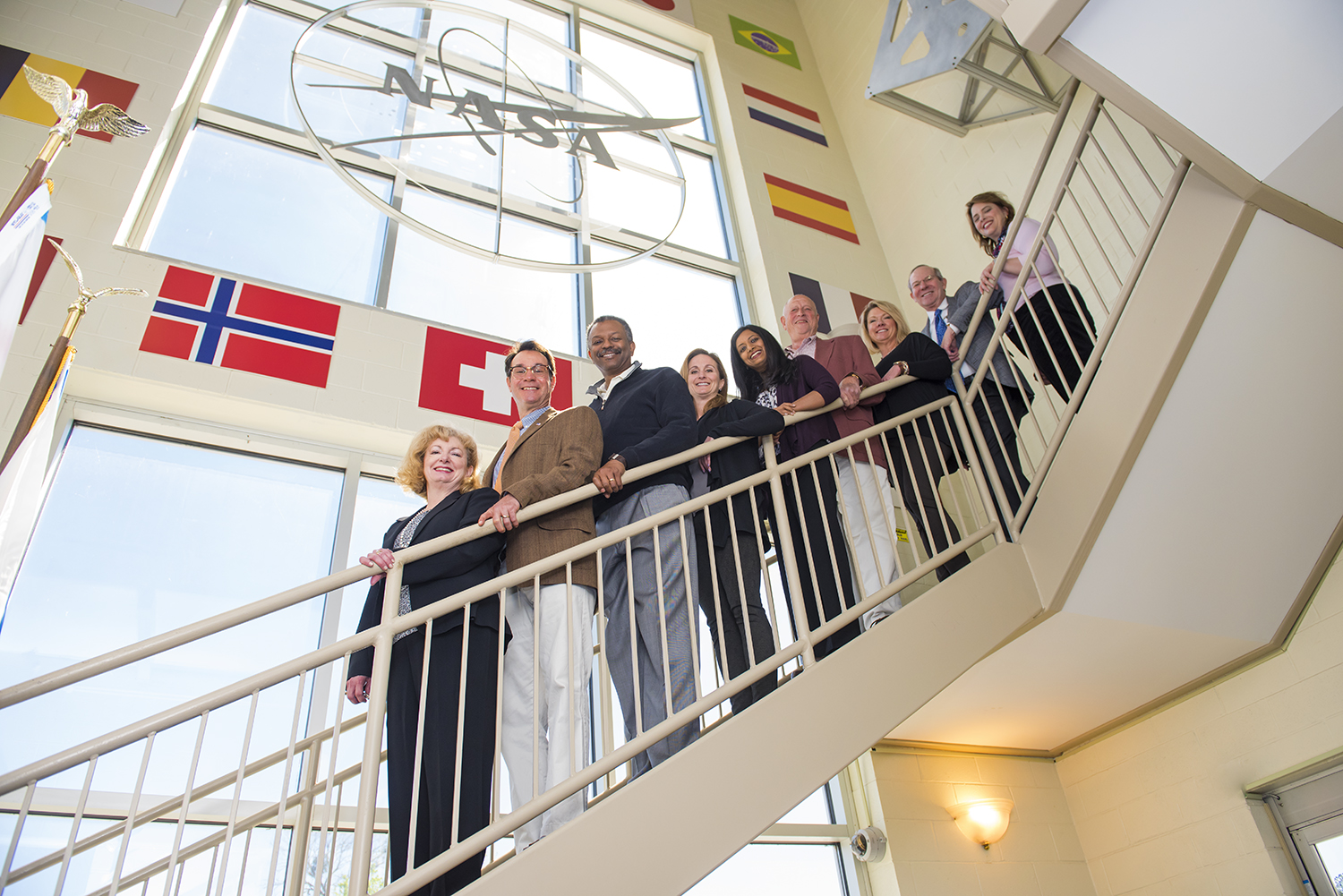
Medical doctors from the Madison County Medical Society visited NASA’s Marshall Space Flight Center April 7 to learn about the numerous investigations taking place on the International Space Station. Dr. Jennifer Fogarty, deputy chief scientist for the Human Research Program at NASA’s Johnson Space Center, spoke to the group about how the human body reacts to microgravity and how this knowledge is helping guide NASA’s mission to explore deep space. The society also toured the Payload Operations Integration Center, mission control for science, where Marshall flight controllers support the orbiting laboratory’s scientific experiments 24/7, 365 days a year. (NASA/MSFC/Charles Beason)
Rover Challenge Winners Featured on ‘This Week @NASA’
The annual Human Exploration Rover Challenge is featured in the latest edition of “This Week @NASA,” a weekly video program broadcast nationwide on NASA-TV and posted online.
On April 3, NASA announced the winners of its Human Exploration Rover Challenge. Ramon Quinones Medina High School of Yabucoa, Puerto Rico, won first place in the high school division, with a time of 4 minutes, 12 seconds. The University of Puerto Rico at Humacao Team 1 won the college/university division with a time of 4 minutes, 21 seconds.
The annual event, supported by over 300 volunteers, challenges students to design, build, test and race lightweight, and human-powered vehicles both as a research project, while highlighting NASA’s commitment to inspiring new generations of scientists, engineers and explorers.
Rover Challenge, hosted by NASA’s Marshall Space Flight Center and the U.S. Space & Rocket Center in Huntsville, is managed by Marshall’s Academic Affairs Office.
View this and previous episodes at “This Week @NASA” on NASA’s YouTube page.
This Week in NASA History: First Space Shuttle Mission, STS-1, Launches — April 12, 1981
This week in 1981, space shuttle Columbia and STS-1 lifted off from NASA’s Kennedy Space Center, marking the first flight of the Space Shuttle Program. Columbia’s 36-orbit flight tested the vehicle’s performance as a reusable spacecraft. The orbiter successfully returned to Earth April 14, 1981, and for the next 30 years the program’s five spacecraft carried people into orbit repeatedly, launched, recovered and repaired satellites, conducted cutting-edge research and built the largest structure in space — the International Space Station. Today, NASA Marshall Space Flight Center’s Payload Operations Integration Center serves as “science central” for the space station, working 24/7, 365 days a year in support of the orbiting laboratory’s scientific experiments. The NASA History Program is responsible for generating, disseminating, and preserving NASA’s remarkable history and providing a comprehensive understanding of the institutional, cultural, social, political, economic, technological, and scientific aspects of NASA’s activities in aeronautics and space. For more pictures like this one and to connect to NASA’s history, visit the Marshall History Program’s webpage. (NASA)
Obituaries
Charles W. Lovell, 85, of Hazel Green, Alabama, died April 7. He retired from the Marshall Center in 1999 as an aerospace engineer.


